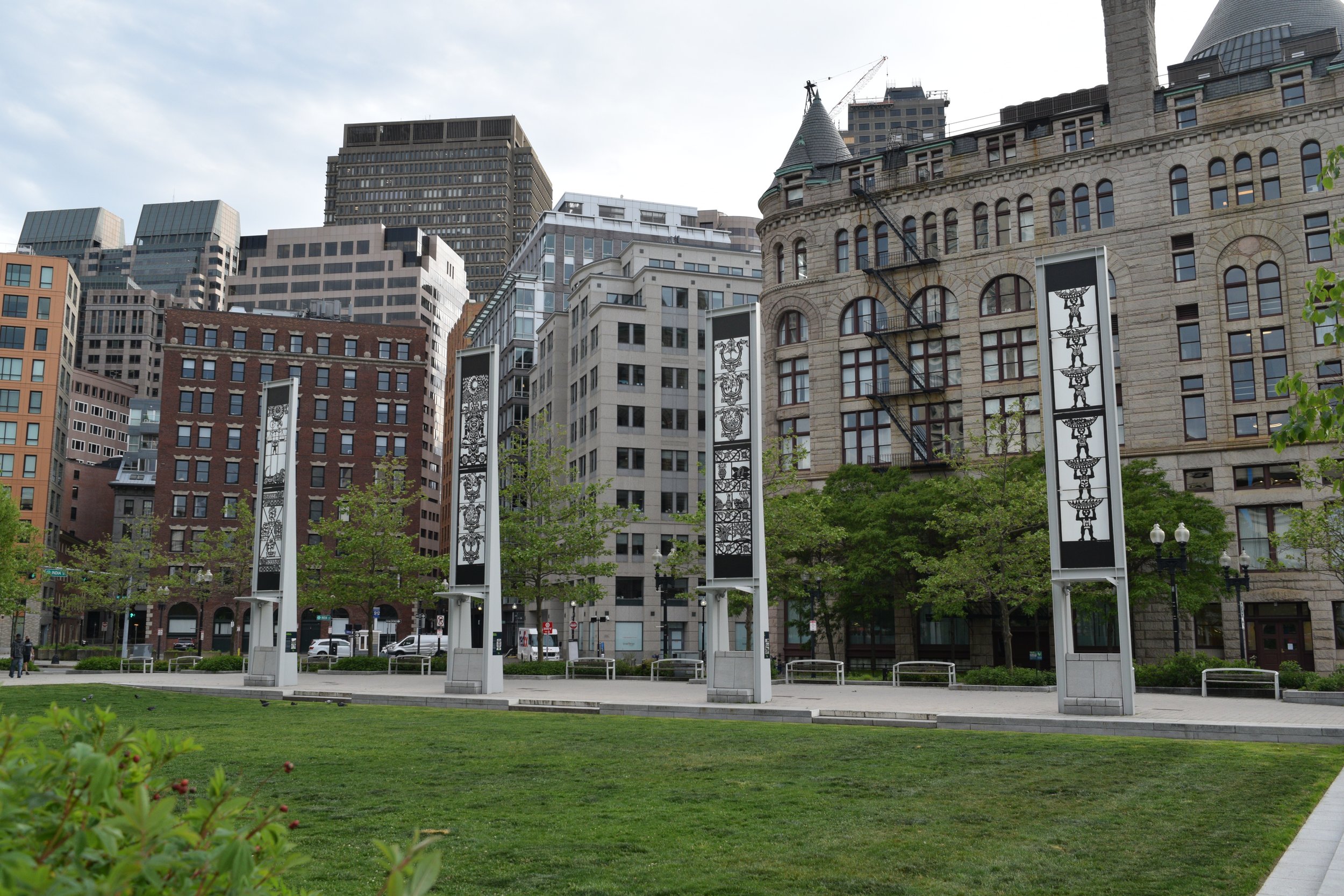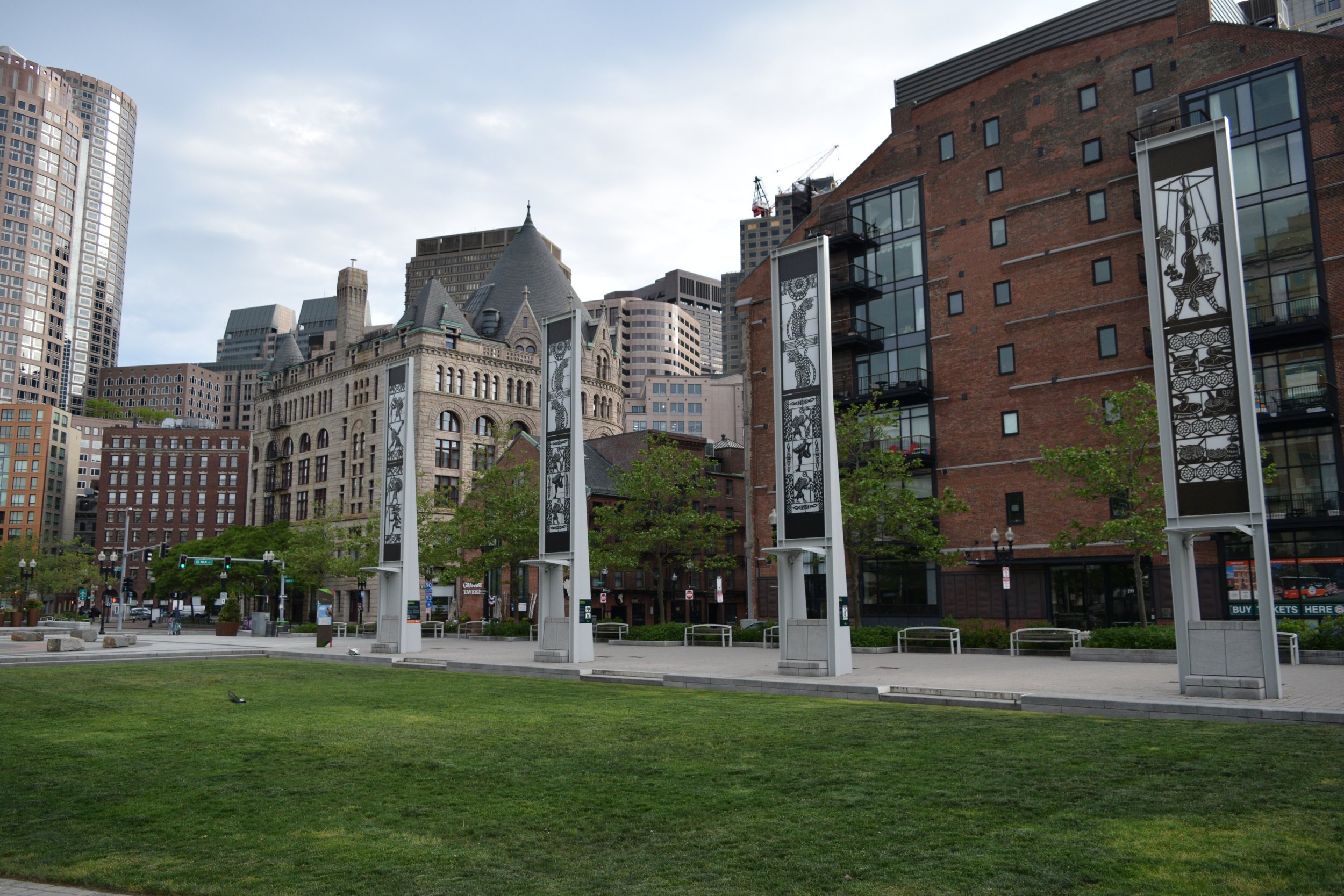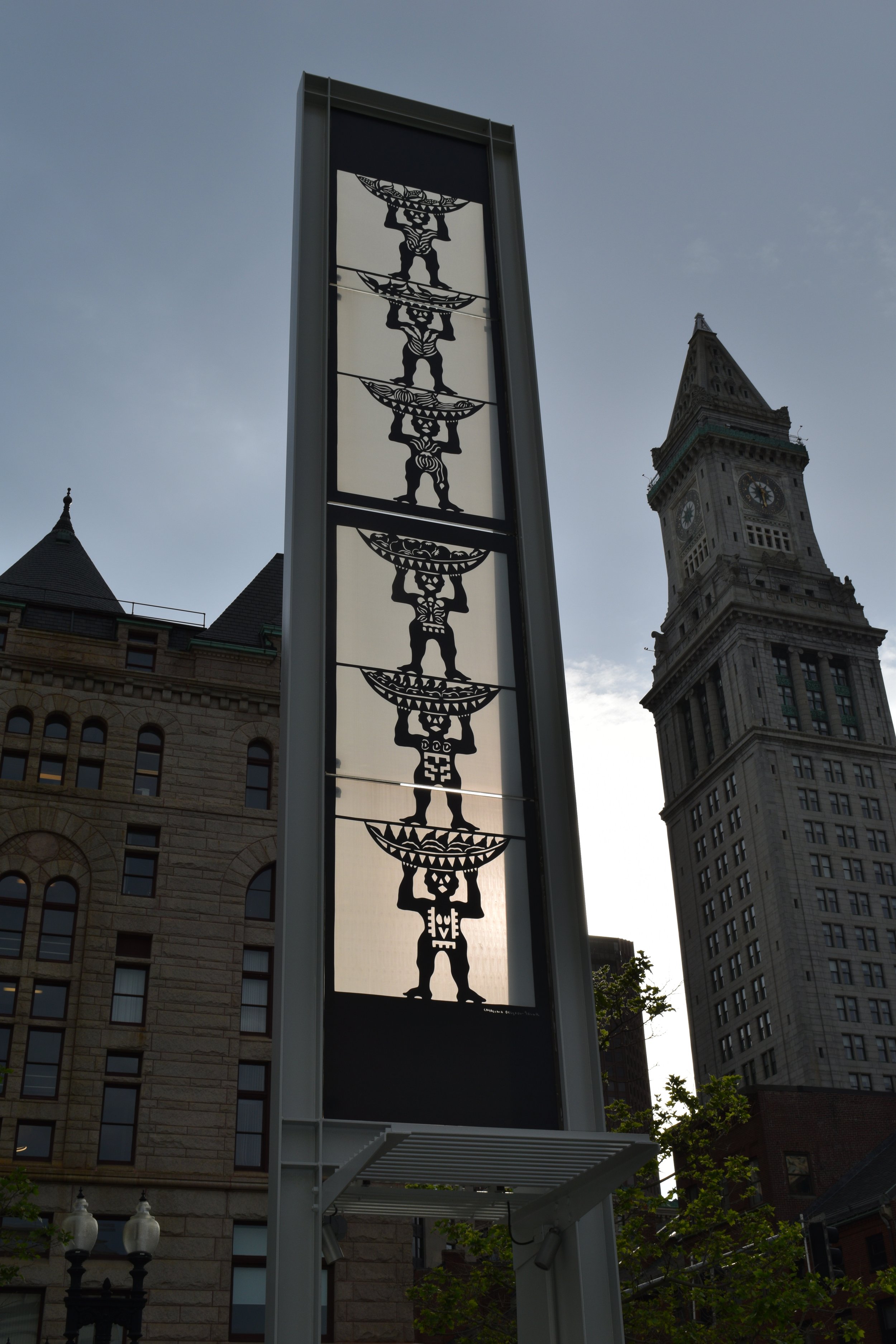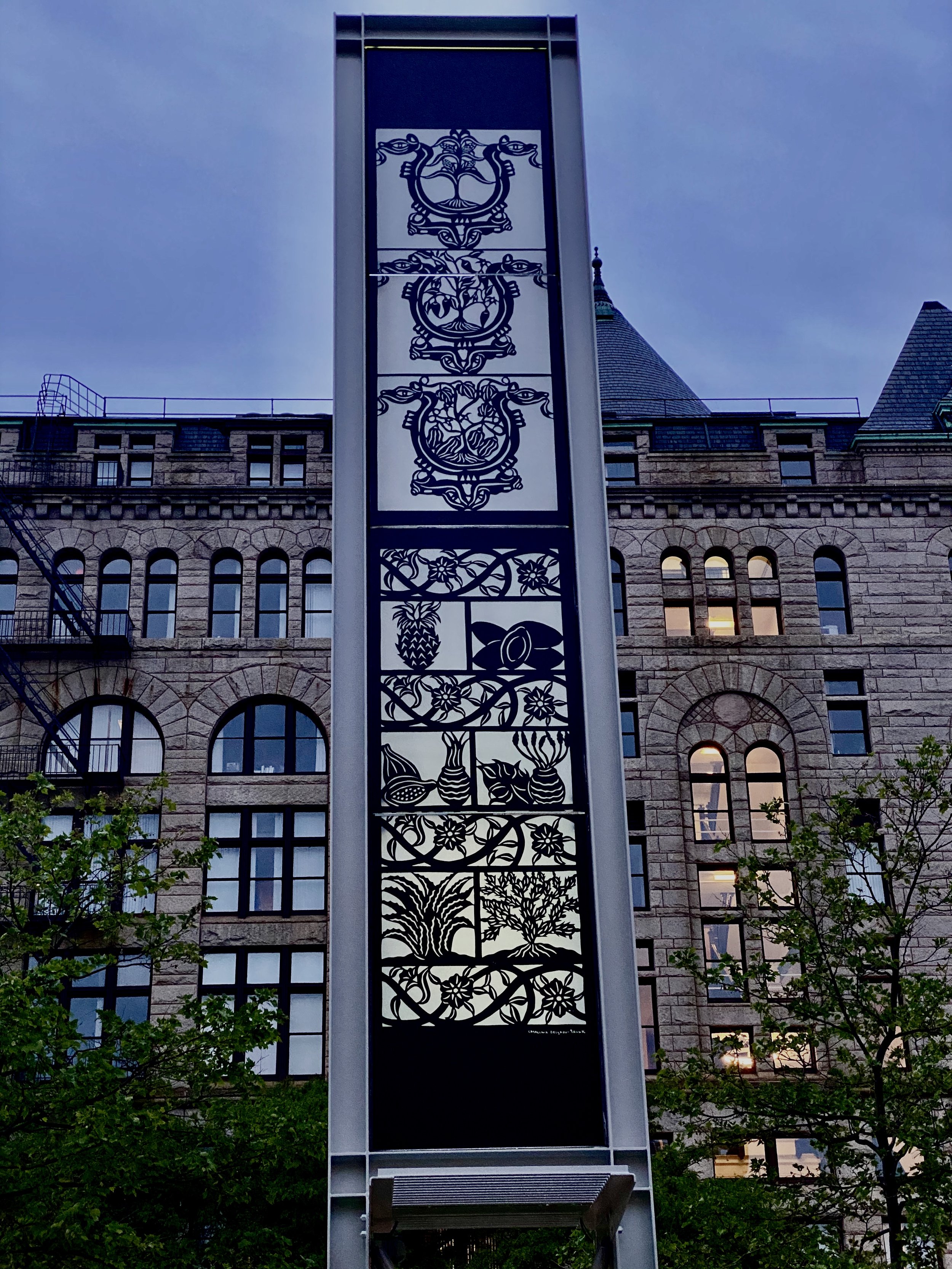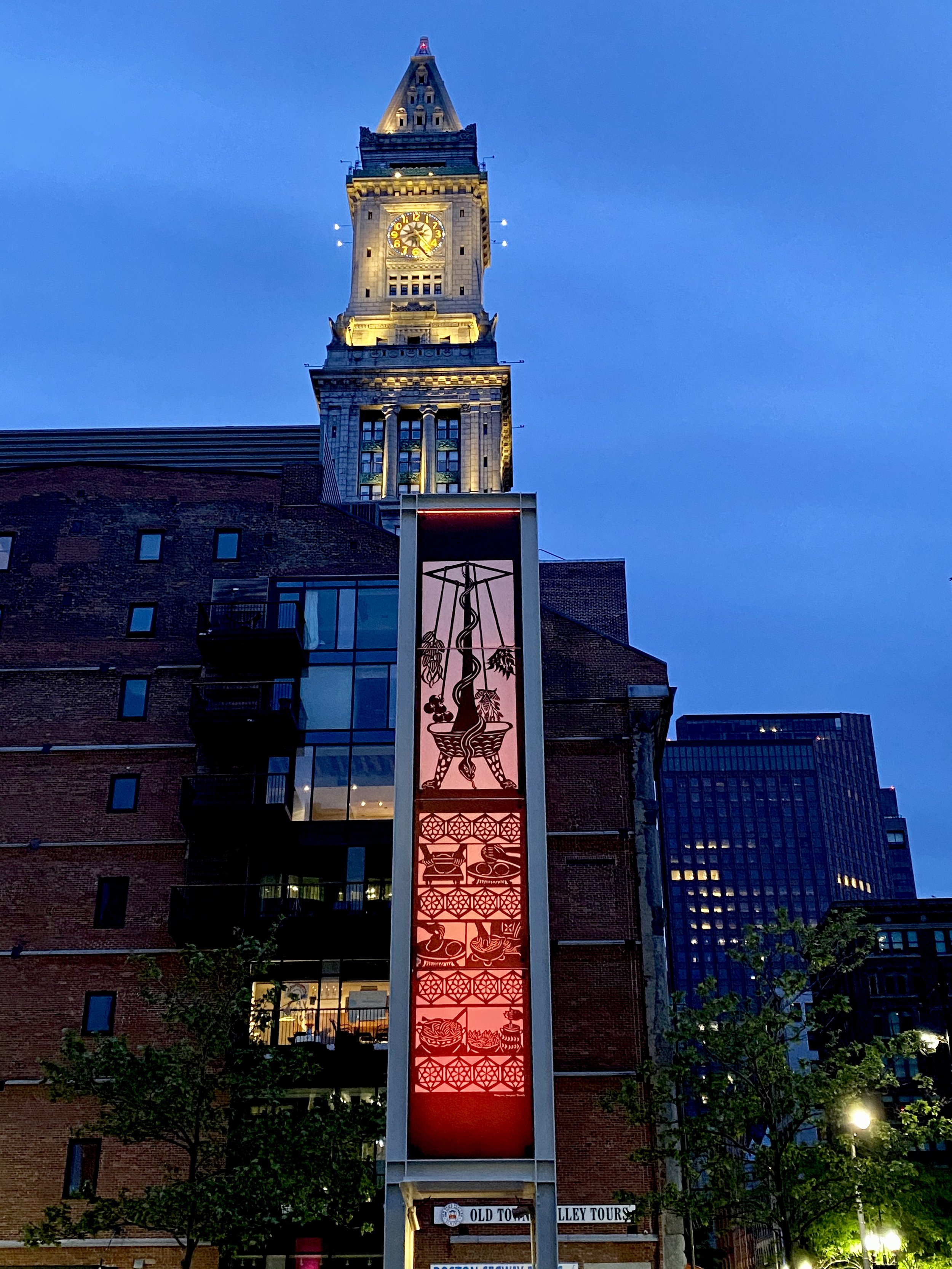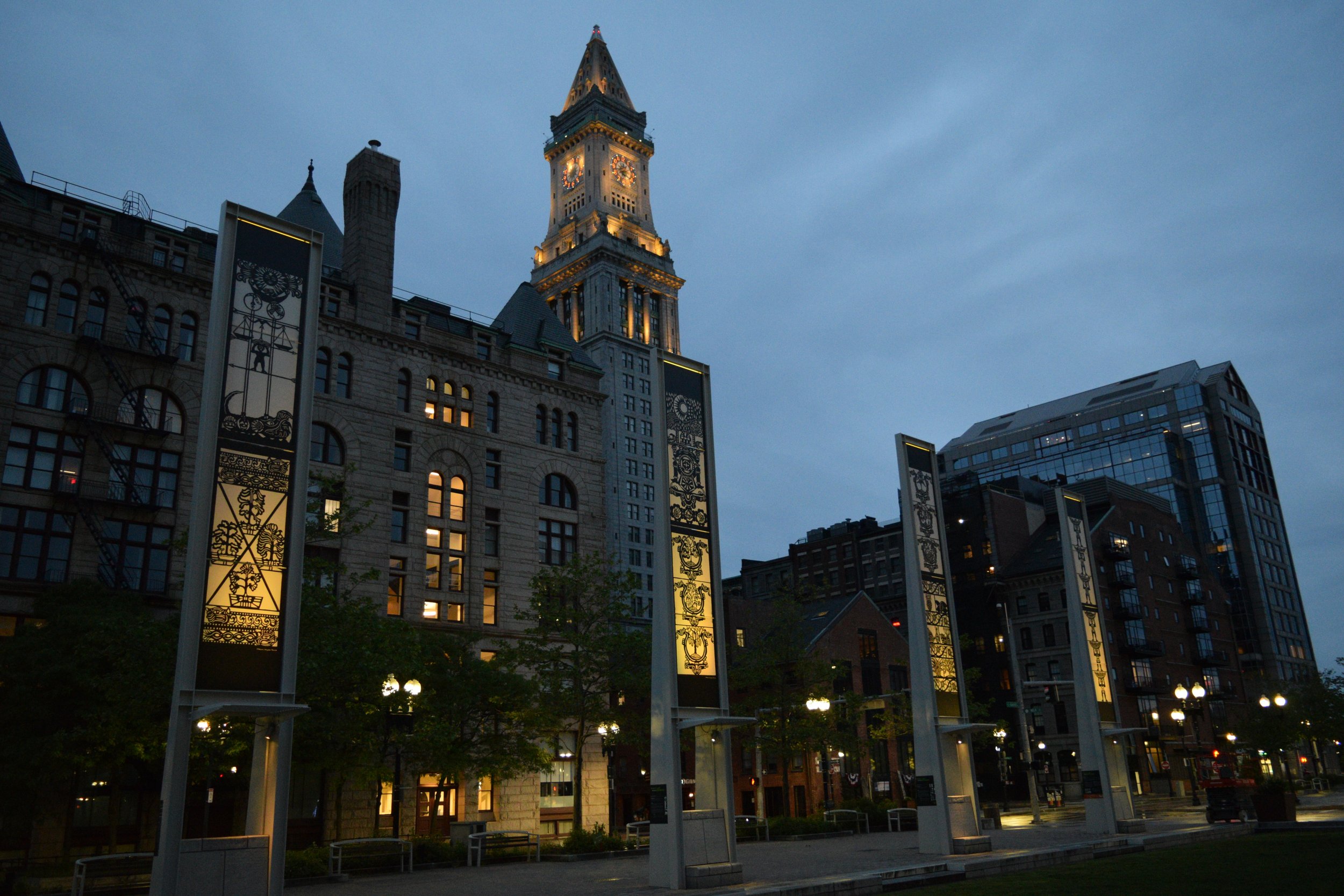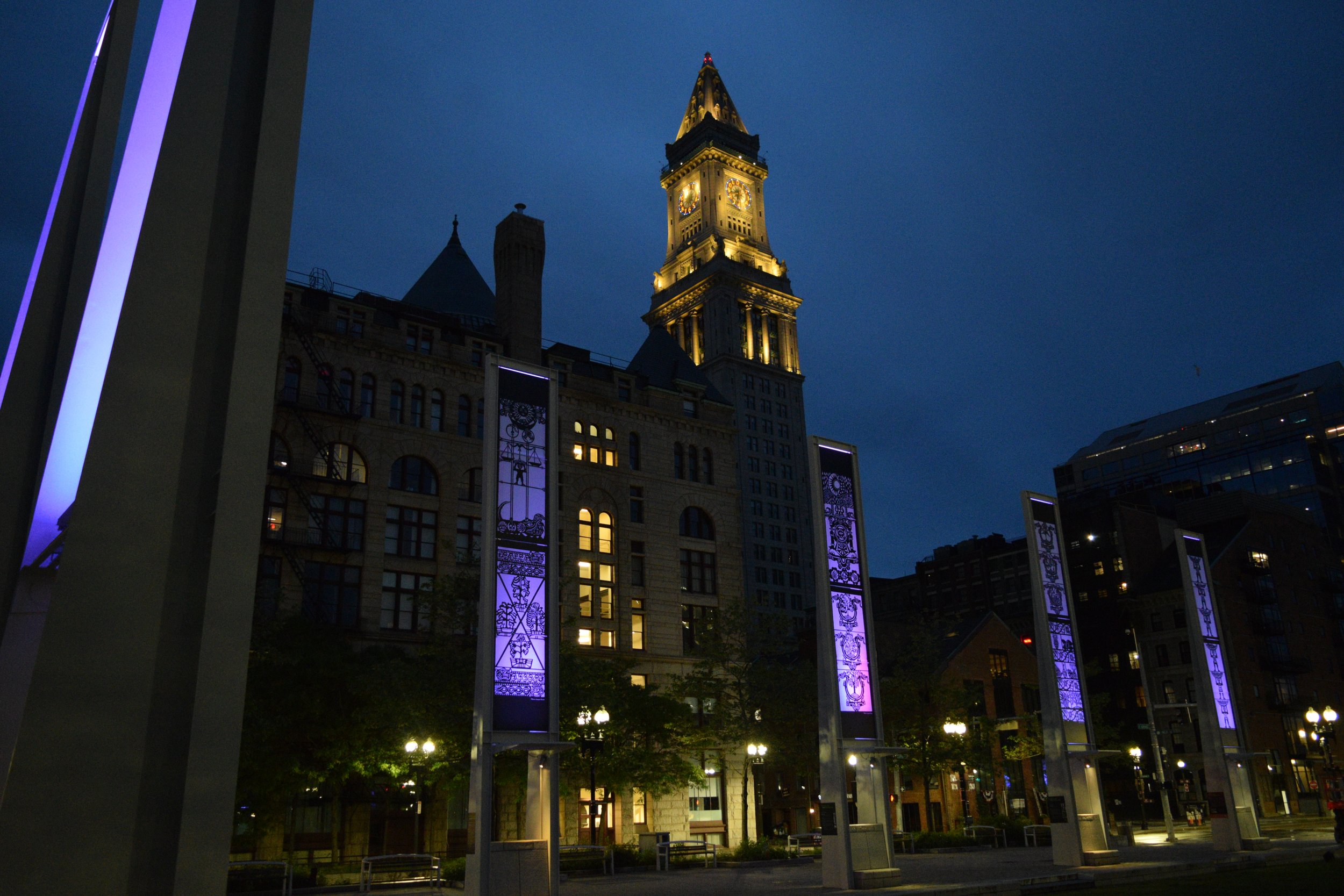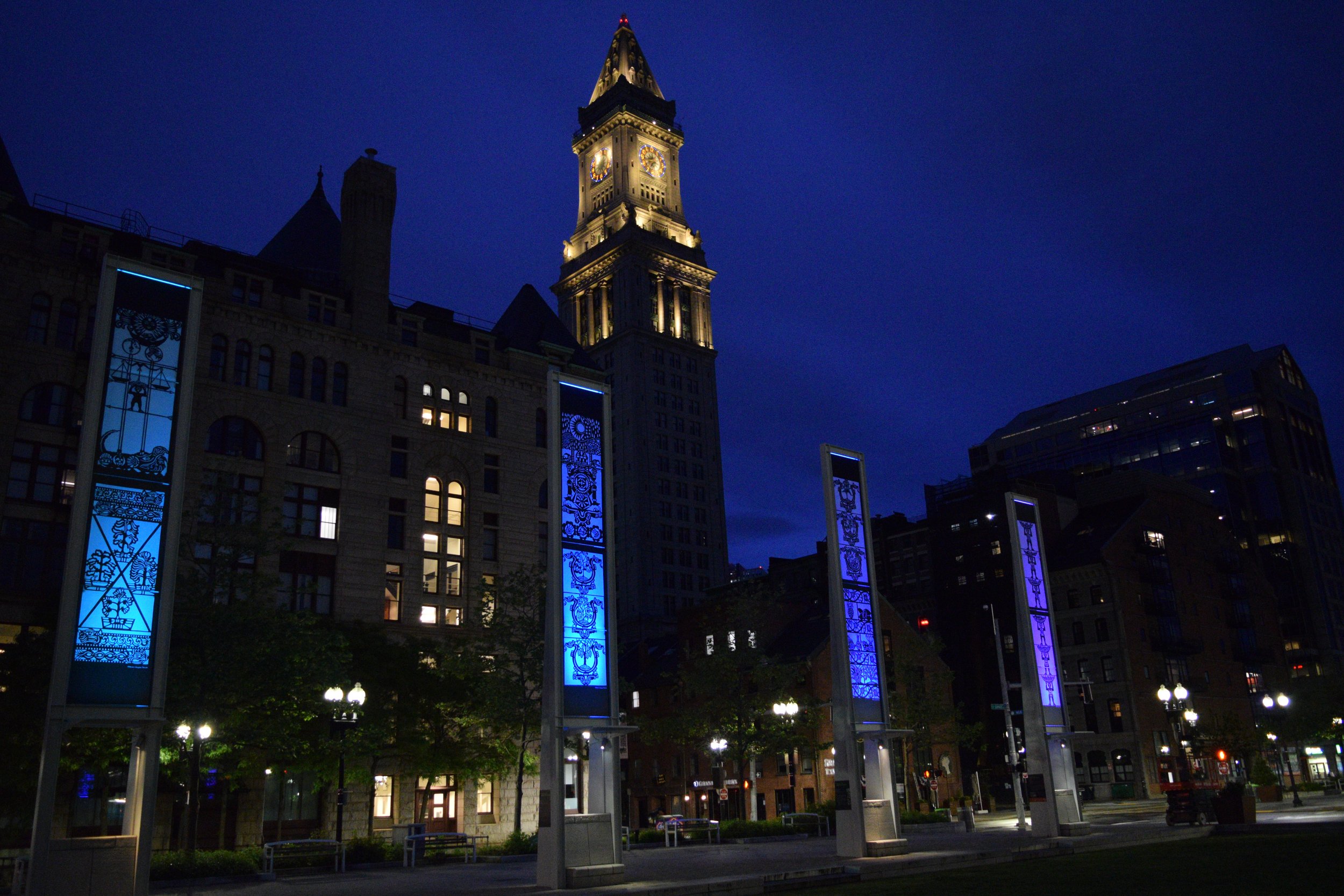Global Connections: Mesoamerican Myths, the Domestication of Nourishment, and its Distribution - Catalina Delgado-Trunk
Catalina Delgado-Trunk, a native of Mexico who lives in Albuquerque, NM, draws from her heritage to create intricate works that reinterpret folklore. She describes herself as an activist, as she uses imagery to connect people of different cultures. She believes, across time and geography, we have asked the same questions: “Where do we come from, what are we doing here, and where are we going?” Pre-Columbian myths provide powerful answers.
The complexity of her work requires patience and time. Delgado-Trunk begins with drawings that form templates for her cutouts. After completing an image, she uses an X-Acto blade to cut the paper. For The Greenway, Delgado-Trunk’s papel picado has been photographed and printed onto vinyl, which is affixed to the Light Blades. Delgado-Trunk’s representations of universal themes of food, nature, and folklore engage with timely conversations around globalization, migration, and identity.
Delgado-Trunk works primarily with papel picado (paper cutout), an ancient craft that has a rich history in Mexican culture. Since pre-contact times, Mesoamerican communities created cut forms using flint or obsidian knives to pierce amate, a type of paper made of tree bark. The Aztecs created papel picado adornment for ceremonies, incising human and animal spirit designs into paper. These traditions are still practiced in certain regions of the States of Puebla, Hidalgo, and Veracruz.
Modern-day paper was invented in the 1st century CE China and spread to Europe via trade routes through the Middle East. Paper cutting traditions developed in many cultures during the 13-15th centuries. In Germany, for instance, Scherenschnitte, which means “scissor cuts,” became popular in silhouettes, valentines, and love letters. Papel de china (tissue paper) came to Mesoamerica through important trade routes between the Philippines and Mexico after the Spanish conquest in the 16th century.
Today, papel picado is very popular in Mexico. It is used to make colorful decorations for holidays such as the Day of the Dead, Mexican Independence Day, Christmas, as well as for weddings and other special events. For Delgado-Trunk, papel picado is a “metaphor for life—ephemeral and traditional.”
Mesoamerican beliefs connected creation with the act of growing seeds, and envisioned the world as a field to be tilled and cultivated. Delgado-Trunk appropriately begins her story by illustrating the formation of the earth, from which all life springs, on the first panel. The subsequent panels depict imagery that blends myth, tradition, and human agency in the growth of indigenous plants and fruits. Nourishment is bestowed to us from the Gods. Humans then cultivate food and share in its richness.
For Delgado-Trunk, we domesticate nature by growing crops as ingredients for cooking. Immigrants bring with them their cuisine, traditions, and languages, resulting in a rich history of cultural exchange. The narrative closes as Delgado-Trunk illustrates traditional forms of cooking in Mexican kitchens, a pictorial recipe for how to make tortillas, mole, and tamales. In Global Connections, Delgado-Trunk simmers together legends and foods across space and time, inviting viewers to delight in fantastical stories about the origins of food, an element that links us all.
Artist Bio
Catalina Delgado-Trunk, a visual folk artist, was born and raised in Mexico City. Delgado-Trunk received her Bachelor of Arts from the University of Texas-Austin after which she lived in Orlando, FL. Due to her parents declining health she returned to Mexico City. While there, Catalina took numerous classes in Mexican paper folk crafts. Upon her return to Orlando, she enrolled in the Visual Arts Department at Valencia Community College, focusing on drawing and design.
Delgado-Trunk designed and installed a Día de Muertos ofrenda (Day of the Dead altar) in the Orlando City Hall Lobby, which was the first of its kind in the state. She was then requested to make another ofrenda at the Florida Folk Art Festival along with developing and holding various lectures on the history and traditions of Día de Muertos traditions in Mexico. It was at this point that she seriously began to design her own “papel picado” banners for the ofrenda.
Delgado-Trunk currently lives in Albuquerque, New Mexico. Her installations, lectures on the history and evolution of the Día de Muertos traditions, and “papel picado” pieces have been well received throughout the world.
